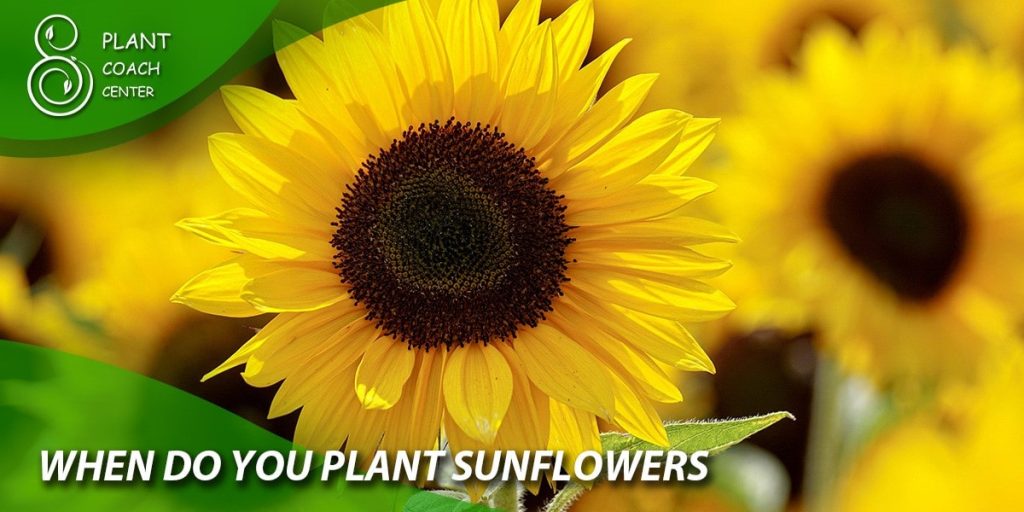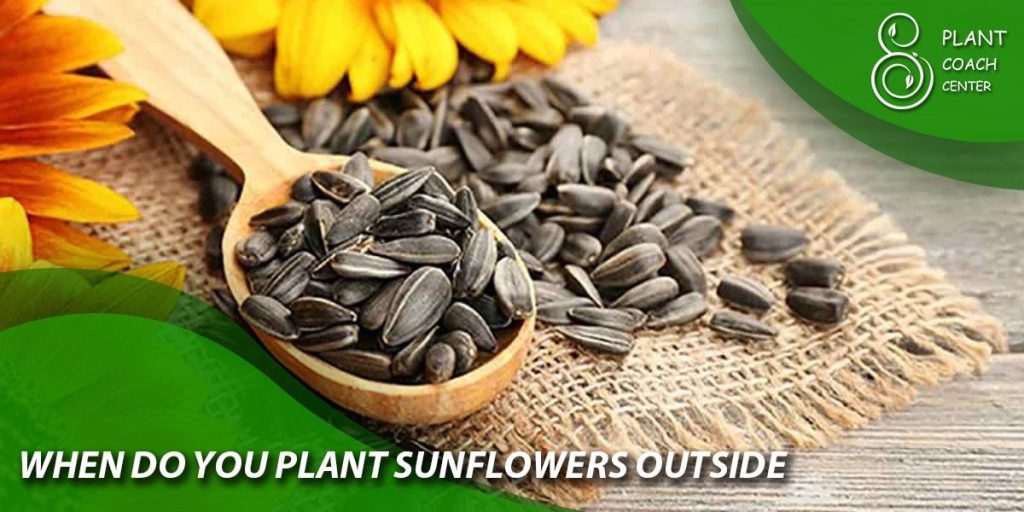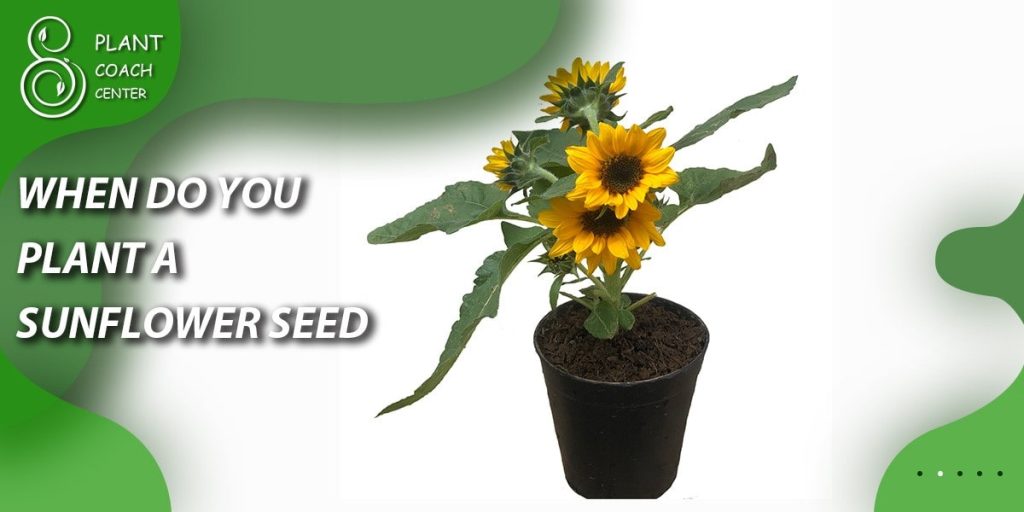When Do You Plant Sunflowers?

Welcome to the vibrant world of sunflower cultivation, where nature’s artistry unfolds through towering stalks crowned with golden brilliance. As you embark on planting sunflowers, you’re stepping into a realm where timing is both science and art. The delicate balance between the sun’s warmth and the Earth’s embrace orchestrates the symphony of growth, transforming a mere seed into a resplendent testament to nature’s ingenuity.
This article explores the intricate dance of seasons and celestial bodies that influence the optimal timing for sowing sunflower seeds. Beyond mere gardening advice, we’ll venture into lunar gardening and zodiac alignment, discovering unconventional yet fascinating approaches to determining when to plant these radiant blooms.
So, whether you’re a seasoned horticulturist seeking to refine your techniques or a curious soul with a newfound love for all things green, join us as we unravel the secrets behind the question: When do you plant sunflowers?
Reading the Sunflower Clock: Understanding Nature’s Signals
Sunflowers offer subtle cues about the right time to plant them in the intricate tapestry of nature’s rhythms. It’s like deciphering a botanical clock that considers various environmental factors. One of the most crucial indicators is temperature.
Sunflowers, known for their affinity to warmth, signal their readiness for planting when the soil temperature reaches around 50 to 55°F (10 to 13°C) at a depth of 2 to 4 inches. This threshold ensures the soil provides the necessary warmth for germination and early growth.
Another critical element to consider is the last frost date. Sunflowers, especially the tender young sprouts, are sensitive to frost. Planting too early can put them at risk, while delayed planting might limit their growth potential.
Consult your local frost chart to determine when the last frost typically occurs in your region. Planting sunflowers after the last frost has passed and the soil has had time to warm up is generally safe.
Soil condition also plays a vital role in the sunflower clock. The soil should be well-draining to prevent waterlogging, which can hinder germination and lead to root rot. Working the soil to a depth of about 6 to 8 inches and incorporating organic matter can improve its structure and drainage capabilities.
Seasonal Symphony: Sunflower Varieties and Their Preferred Timelines
Just as a symphony is composed of diverse instruments harmonizing to create a melodious whole, the world of sunflowers is a garden of varieties, each with its preferred planting timeline. Whether you’re drawn to the towering majesty of the Giant Sunflower or the whimsical allure of the Teddy Bear Sunflower, understanding their individual needs can lead to a blooming masterpiece.
Giant Sunflowers, impressive heights reaching up to 16 feet or more, often steal the spotlight in gardens. These giants usually take longer to mature, requiring a longer growing season. It’s best to plant them a few weeks before the last frost date, ensuring they have ample time to establish themselves before the full heat of summer.
On the other end of the size spectrum are the Dwarf Sunflowers. Their compact nature makes them suitable for containers and small spaces. These little charmers have a shorter growing season, so you can plant them a bit later once the threat of frost has passed and the soil has warmed up.
Mid-sized varieties, like the Lemon Queen or Autumn Beauty, balance height and growth period. They can be sown around the last frost date, capitalizing on the warming temperatures of spring.
As you curate your sunflower garden, consider different varieties’ colors, sizes, and growth periods. This symphony of diversity will paint a vivid picture of your garden and give you the joy of watching the seasonal movements of various sunflower instruments as they combine to create a breathtaking crescendo of blooms.

Aligning with Astrology: Planting Sunflowers Based on Zodiac Signs
For those who seek a touch of cosmic magic in their gardening endeavors, the alignment of planting sunflowers with zodiac signs adds an intriguing layer to the art of cultivation. Just as celestial bodies influence our personalities and destinies, they can also guide the growth of your sunflowers.
Aries, known for their fiery energy, can plant sunflowers during the early days of spring, embracing the season’s vigor to kickstart their garden. With their earthy sensibilities, Taurus might find comfort in planting when the soil is rich and warm, around mid-spring. Gemini’s adaptable nature can find harmony in sowing seeds during the changing weather of late spring, mirroring their versatility.
Cancer, ruled by the moon, can enhance their connection by planting during a full moon, allowing the lunar energy to infuse their garden. Leo, the radiant sign, can opt for mid-summer planting, basking in the sun’s zenith alongside their sunflowers. Virgo’s attention to detail might lead them to meticulously time their planting, ensuring the best conditions for growth.
Libra, the sign of balance, can choose the equinoxes for their planting, aligning with nature’s equilibrium points. Scorpio, associated with transformation, can plant from autumn to winter, symbolizing change. The wanderer Sagittarius might scatter seeds in various spots, embracing the adventure of wherever they bloom.
Capricorn’s methodical approach suits a well-planned planting, while Aquarius, the innovator, could experiment with unconventional planting times. Finally, Pisces’ dreamy disposition aligns with planting during the waning moon, allowing their sunflowers to flourish under its gentle influence.
Embracing the mystique of astrology in gardening infuses intentionality into your planting journey. While it may not guarantee cosmic outcomes, it undoubtedly adds a unique and enchanting dimension to your sunflower patch, fostering a connection between the earthly and the celestial.
Moonlit Planting: Unveiling the Secrets of Lunar Gardening
In the realm of gardening, there exists a practice that intertwines the cycles of the moon with the growth of plants – lunar gardening. While it might seem like a mystical concept, its rationale is rooted in the moon’s gravitational pull and its influence on Earth’s tides. Just as the moon affects oceanic rhythms, it’s believed to impact the moisture levels in soil, thereby influencing plant growth.
Lunar gardening revolves around four primary moon phases: New Moon, First Quarter, Full Moon, and Last Quarter. Each stage holds unique qualities that lunar gardeners harness to optimize planting success.
New Moon
This phase symbolizes new beginnings. It’s ideal for sowing seeds that produce crops below the ground, like carrots or potatoes. As the moon waxes, plants put their energy into root development.
First Quarter
A time of growth and strength, this phase is excellent for planting above-ground crops like sunflowers, as the increasing moonlight spurs leafy growth.
Full Moon
The peak of lunar energy is best suited for harvesting and flowering plants. Flowers like sunflowers are believed to bloom more vibrantly when planted around the Full Moon.
Last Quarter
As the moon wanes, energy is drawn downward. This phase suits activities like pruning, weeding, and transplanting, as plants focus on root development.

Microclimates and Macro Effects: Navigating Regional Planting Timetables
In gardening, the phrase “right time to plant” takes on new dimensions when considering microclimates’ impact. These small-scale climate variations, influenced by topography, altitude, and proximity to water bodies, can create pockets of unique growing conditions within a larger region. As a result, the planting timetable for sunflowers can vary significantly from one microclimate to another.
Mountain Zones
Higher altitudes experience cooler temperatures. If you’re in a mountainous region, it’s wise to delay planting sunflowers until the risk of frost has ultimately passed, which might be later than the guidelines for lower-lying areas.
Coastal Regions
Coastal areas tend to have milder winters and cooler summers due to the moderating influence of nearby oceans or seas. In such zones, you might find an extended growing season, allowing for an earlier start to planting sunflowers.
Urban Heat Islands
Cities often have higher temperatures than their surrounding rural areas, creating “heat islands.” If you’re gardening in the city, your planting times might be slightly ahead of the general regional recommendations.
Desert Environments
In desert microclimates, temperatures can be extreme. Planting sunflowers during cooler periods, like late winter or early spring, can help them avoid the scorching heat of summer.
Valley Bottoms
Valleys can trap cold air, leading to frost pockets. It’s essential to be cautious and plant sunflowers once the risk of frost has subsided and temperatures are consistently milder.
From Seeds to Sunshine: Calculating Backward for Perfect Planting Dates
Imagine gazing at a sunflower in full bloom, its vibrant petals reaching for the sky. But have you ever wondered about the journey it took to get there? Planning backward from the desired spectacle of blooming sunflowers is an art seasoned gardeners employ to ensure perfect planting dates.
Setting the Blooming Date
Begin by envisioning when you’d like your sunflowers to reach their peak bloom. Whether for a special event or simply the joy of a picturesque garden, mark this date on your calendar.
Understanding Growth Duration
Different sunflower varieties have varying growth rates. Research the estimated time for your chosen type to fully mature and bloom. This information serves as a foundation for your planning.

Factoring in Weather and Climate
Consider your local climate and weather patterns. Sunflowers require warm soil and frost-free conditions for optimal growth. Be aware of the average date of the last frost in your area and the typical warming trends.
Working Backward
With the blooming date in mind, subtract the growth duration of your sunflower variety. This will give you a rough estimate of when to aim for planting. However, remember to factor in a buffer period for unexpected weather fluctuations or delays.
Accounting for Germination
Remember that sunflowers don’t bloom immediately after planting. The seeds need time to germinate and establish roots. Adjust your planting date further backward to accommodate this phase.
Adjusting for Soil Preparation
Preparation is critical. Work the soil, add compost, and ensure it’s ready to receive the seeds. This might take a few weeks, so factor this into your timeline.

Conclusion
In the enchanting tapestry of gardening, the journey from sunflower seeds to towering blooms is a symphony of science, art, and cosmic connection. From deciphering the sunflower clock’s signals to embracing lunar gardening’s mystical influence, each approach adds a layer of wonder to the process.
Whether aligning with zodiac signs or mastering microclimates, the dance between nature’s cues and human intentionality is a remarkable partnership. And as we calculate backward to orchestrate perfect planting dates, we discover that gardening is more than just a hobby; it’s a collaboration with the Earth itself.
So, whether you’re a seasoned horticulturist or an eager beginner, the mysteries and methodologies explored here are your companions on the journey to nurturing sunflowers from seed to sunshine. For more insights, tips, and inspiration on all things gardening, visit PlantCouchCenter.com, where the world of plants unfolds in all its captivating glory.
When is the best time to plant sunflowers?
Plant sunflowers after the last frost and when soil temperatures reach 50-55°F (10-13°C) for successful germination.
Can I plant sunflowers in any season?
While spring is ideal, you can plant specific varieties in late spring, summer, or early fall, considering your local climate.
How does lunar gardening affect sunflower planting?
Lunar phases can influence soil moisture and growth. Plant root crops during a New Moon and above-ground plants during a First Quarter.







